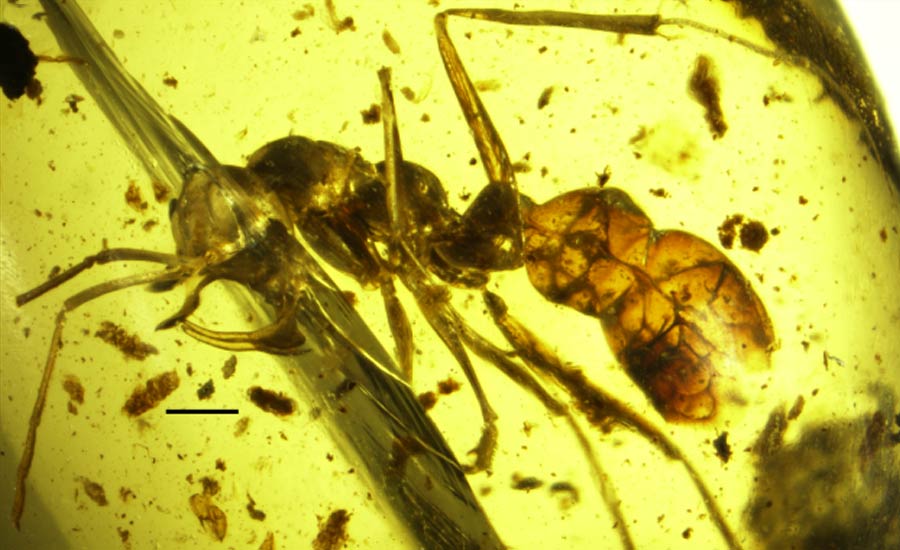
Contents
Newly discovered extinct ant species
A new species of trap jaw ant and has been described by a group of scientists from USA. This new species of ant described is already extinct and estimated to have lived almost 100 million years ago. The specimen was found preserved in amber dated 98 million years from Myanmar.
What is a trap jaw mechanism?
Ants with trap jaw mechanism can keep their mandible in open position. Then they can close it rapidly by striking it with clypeus above. (Clypeus is a broad plate at the front of an insect’s head.) Clypeus is usually reinforced in these ants. Most of the trap jaw ants have a trigger hairs associated with mandibles or clypeus. These trigger hairs initiate mandible closure when triggered.
Trap-jaw behaviour has evolved at least four times in three families of ants: Formicinae, Myrmicinae and Ponerinae.
Taxonomic position of new species
Newly described species Linguamyrmex vladi is placed under the Order Hymenoptera, Family Formicidae and Subfamily Haidomyrmecini. Haidomyrmecines are unique and are known as ‘Hell ants’ due to the presence of unique mandibles. Their mandibles are scythe like and can be moved in vertical plane.
Hell ants are extinct, but is not the ancestors of modern day ants. They appear to be a stem group which went extinct before the common ancestor of modern day ants appeared.
Mouthparts make these ants unique
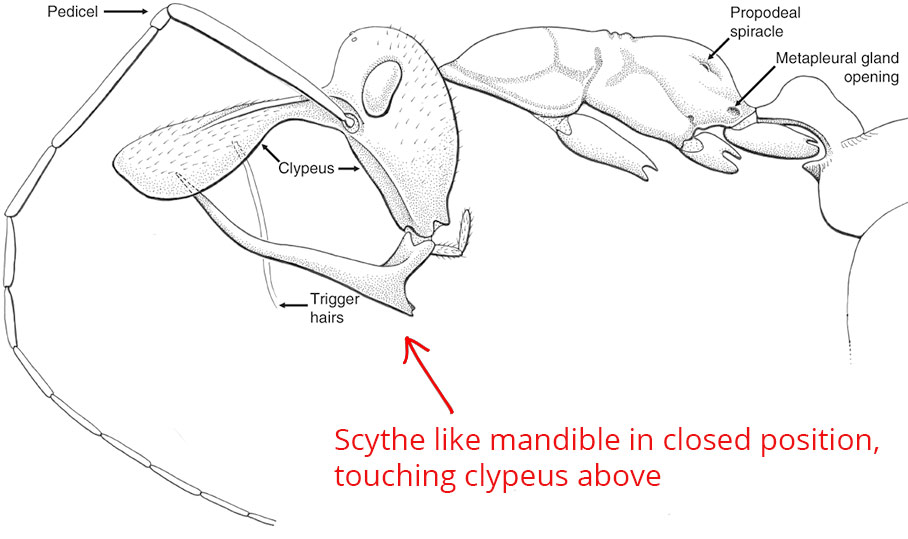
The newly described hell ant reveals stunning morphological features in detailed examination. Modem day ants have plain centre facing mandibles. But L. vladi had giant scythe like mandibles that pointed upwards. This type of mandibles are not found in any ant groups living today.

The ant had a clypeus, that is reinforced with deposited metals. The metals were incorporated into the underside of clypeal paddle along the centre. The specimen was preserved with mandibles positioned near this spot. This suggests that the reinforcement is intended to accommodate the mandibular impact.
They also possess elongate, paired setae on the clypeus. These setae are interpreted as trigger hairs that close the mandibles at horrifying speeds.

The researchers also discovered a channel, much like a tube in between the mandibles. According to them, the ant probably sucked haemolymph out of the body of its prey. Clarifying this statement, they also found a fossilised soft bodied larva along with L vladi.
You may also be interested in Largest living fish on earth
So how did they eat?
These predatory ants must have fed on soft bodied animals. When they encounter their prey, their clypeal hairs touch its body. This triggers the sudden closure of mandibles in upward direction. Pointed mandibles now pierce the prey’s body. Using the channels in mandibles, these ants can suck haemolymph (blood) out of the body of prey.
Upward moving mandibles are stopped by the expanded clypeus extending beyond the head. Heavily reinforced under side of the clypeus helps to withstand the impact pressure of upward directed mandibles.
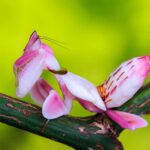

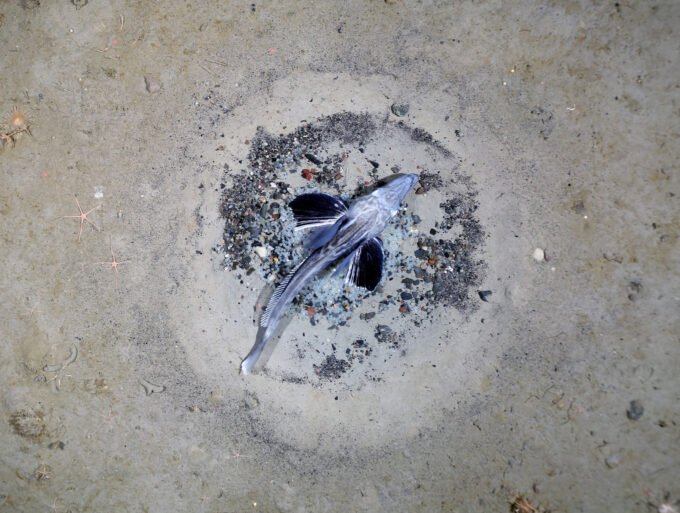


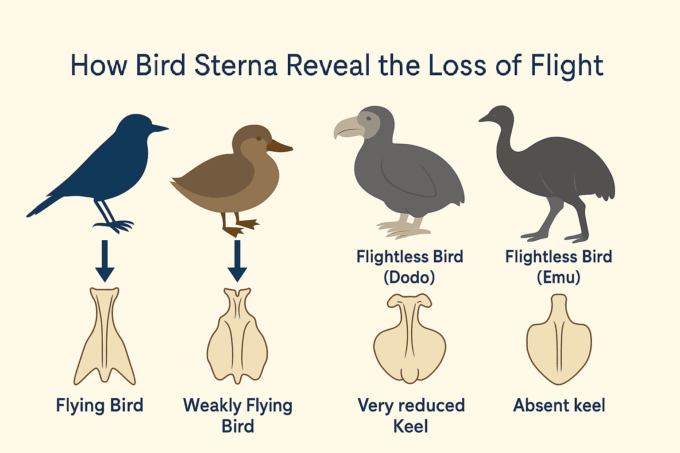



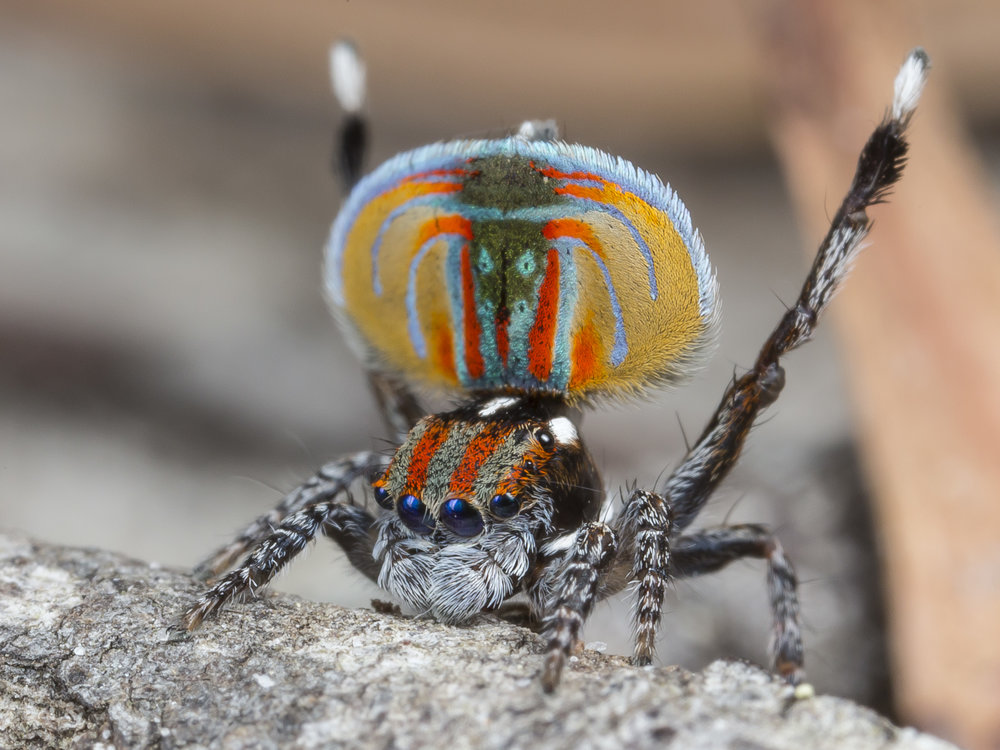
Leave a comment